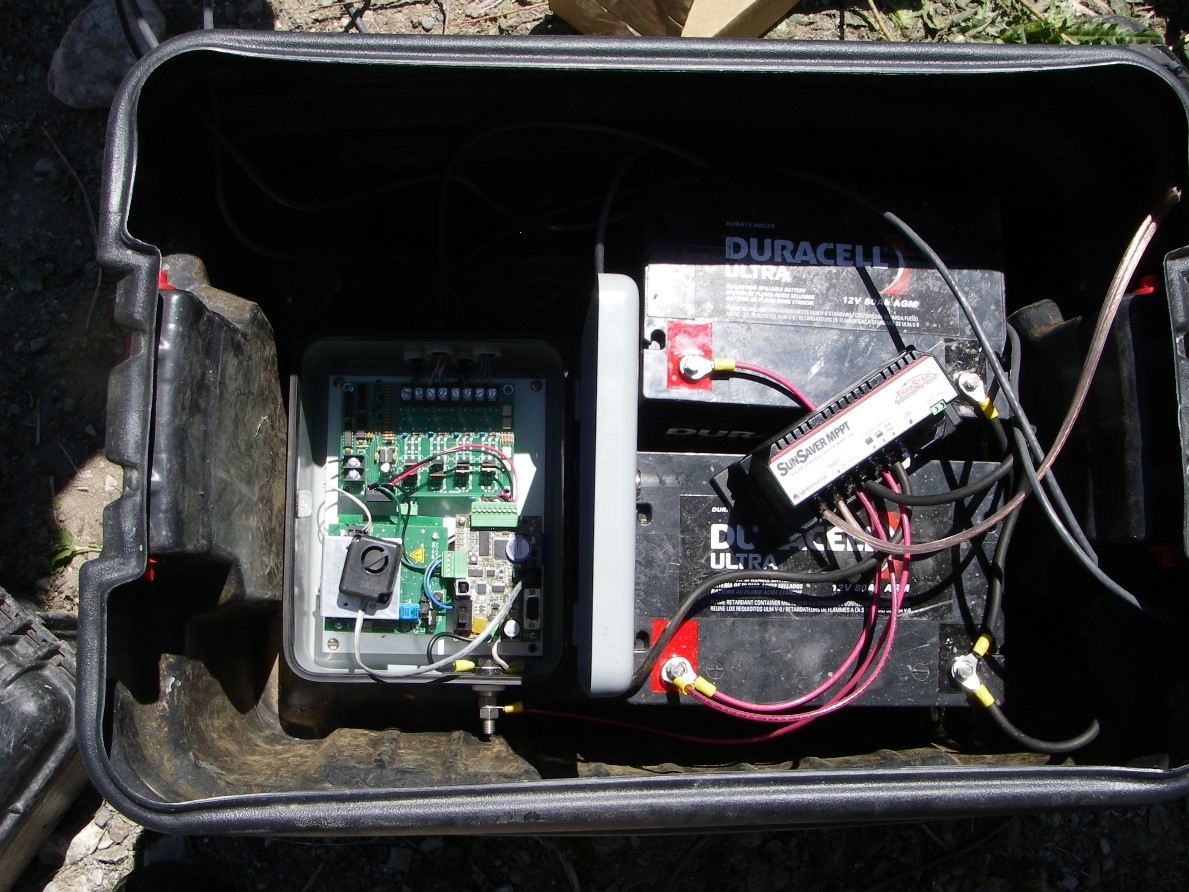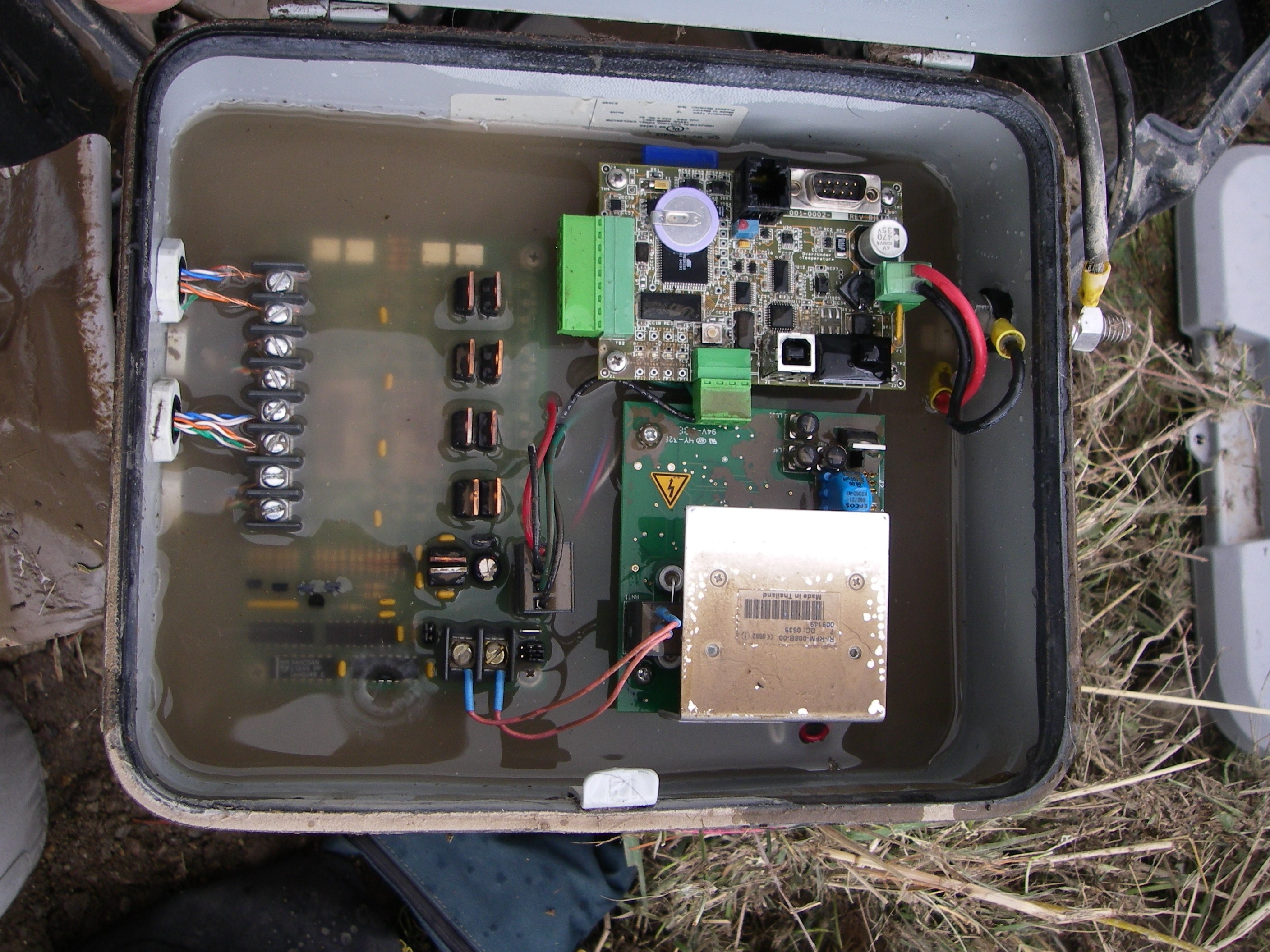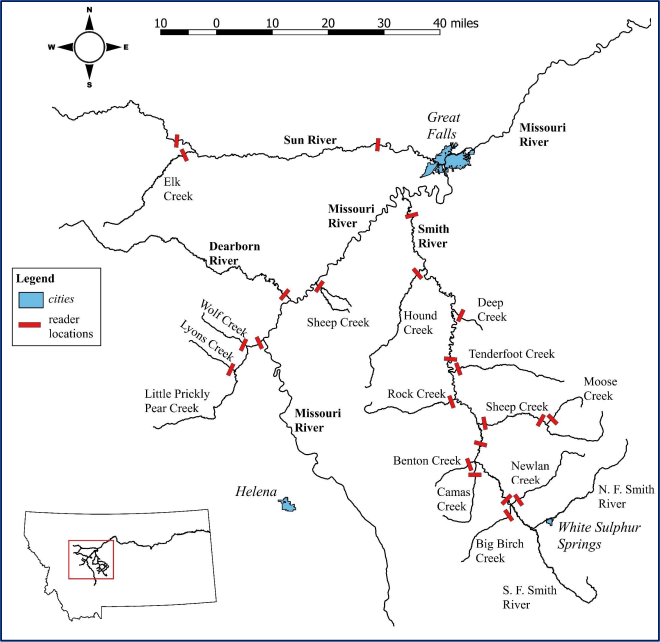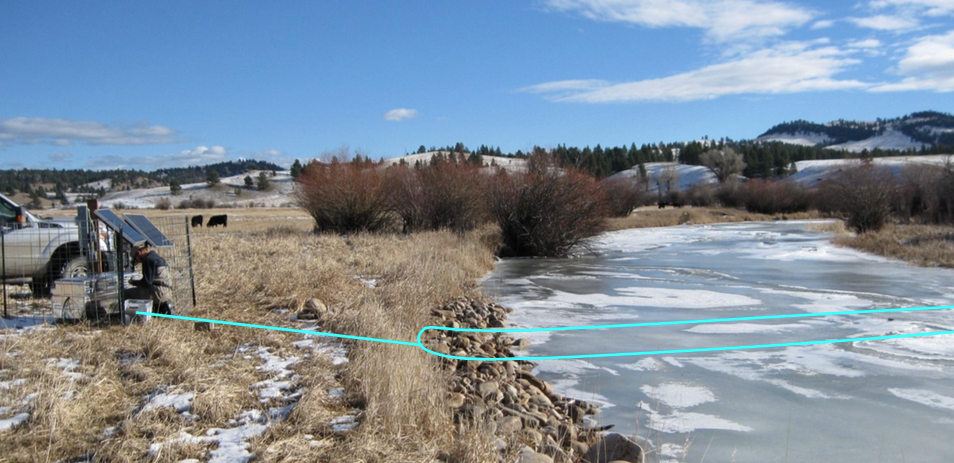Introduction
The Department of Ecology has been checking the population and migration patterns
of fish in the Smith River. Radio Frequency Identification (RFID) tags are implanted
into fish swimming in the river which communicate with various antennae spread out
across the system. The antennae transmit data to the RFID reader stations such that
the location and frequency of fish at a particular point along the river can be recorded.
The Department of Ecology currently uses a system, known as the gray box, produced
by Oregon RFID™ which exhibits a large number of problems.
 |
 |
Oregon RFID™ Feild Unit before and after a streams water levels rose suddenly and
unexpectedly during a hail storm
|
The Oregon RFID™ Feild Unit (gray box) is incredibly restrictive in terms of user
interface. The data feed produced is inaccessible without physically visiting the
RFID reader sights. This is a tremendous problem considering the very remote locations
of the RFID readers. Additionally, the RFID data feed can only be accessed by opening
the box containing the RFID circuitry exposing the internal components to water from
the river and increasing the risk of contamination. The data feed format is incredibly
unusable as the putty database where it arrives is not easily manipulated and must
be copied into a more usable program such as excel.
This is the second consecutive year in the which the MSU Fish RFID project has been
assigned. A proposed solution, known as the orange box, was created last year and
is the basis for the approach of this year’s project. The orange box has advantages
over the gray box such as an improved user interface and the addition of a
lightning surge arrester and utilized similar technology to read the RFID tags. There are issues with the orange box that will be addressed
in this year’s project. The
user interface enhancements must be completed including the ability to convert the data feed into a usable format
such as a .csv file and grant remote access to some of the more inconvenient locations.
The RFID reader also most include an
additional antenna such that both fish populations and movements can be recorded by the system for better
population assessments by the department of ecology. By the end of the academic year,
the MSU Fish RFID project will achieve these enhancements and provide an improved
replacement for the current RFID reading system.
Motivation
The main goal for the MSU Fish RFID project is to provide an improved alternative
the fish tracking system currently used by the Department of Ecology. The department
has issued concerns over the usefulness of the RFID reader used to track the population
of fish on various points on the Smith River. The ability to track and monitor the
populations of fish is especially important in a state like Montana where outdoor
activities are a major component of its culture. Monitoring through the RFID system
is important to provide assistance to responsible involvement with the environment
ensuring that recreational activities are still possible while the ecology is in no
way threatened unnecessarily.

From a technical perspective, the MSU Fish RFID project is an opportunity to incorporate
technical design with an actual client. The project requires design elements in power
efficiency, communication design, and software design. The
power implementation design is to be performed in order to ensure that the RFID tags can be efficiently read
and the antennas sufficiently powered while minimizing losses due to noise and unnecessary
power draw. The communication design will be performed in order to create a signal
that can accurately respond to the tags implemented within the fish and to have multiple
antennas receive signals without interference. The software design is to be implemented
to create a system where the data feed is easily attainable and the data is clear
and usable. The RFID project ensures technical advances and design experience while
simultaneously contributing to the expansive outdoor experiences available in Montana.
Sponsor Information
Michael Lance | Department of Ecology
The sponsor for the MSU Fish RFID project is Michael Lance of the Department of Ecology.
Mike researches fish population and movement in the Smith River monitoring the ecological
stability of the region. The reader stations are located in numerous locations, many
of which are in relatively inaccessible regions requiring multiple day trips in order
to access the data. Mike has requested the redesign of the RFID readers in order to
simplify the process of obtaining data while simultaneously enhancing the data feed.
It has been specifically requested that the new design incorporate multiple antennas
in order to monitor fish movements as well as populations. It has also been requested
that the main focus on the project is to enhance the user interface of the system.
Michael Lance effectively has the main authority in stipulating the constraints and
goals of the project
Email: michael.j.lance@gmail.com
Andy Olson, Ph.D. | College of Engineering
Andy Olson is an Adjunct Professor at Montana State University. His research areas
include:
- Communications
- Communications Electronics Active and Passive
- Microwave Circuits
Office: COBH 631
Email: andyo@montana.edu




